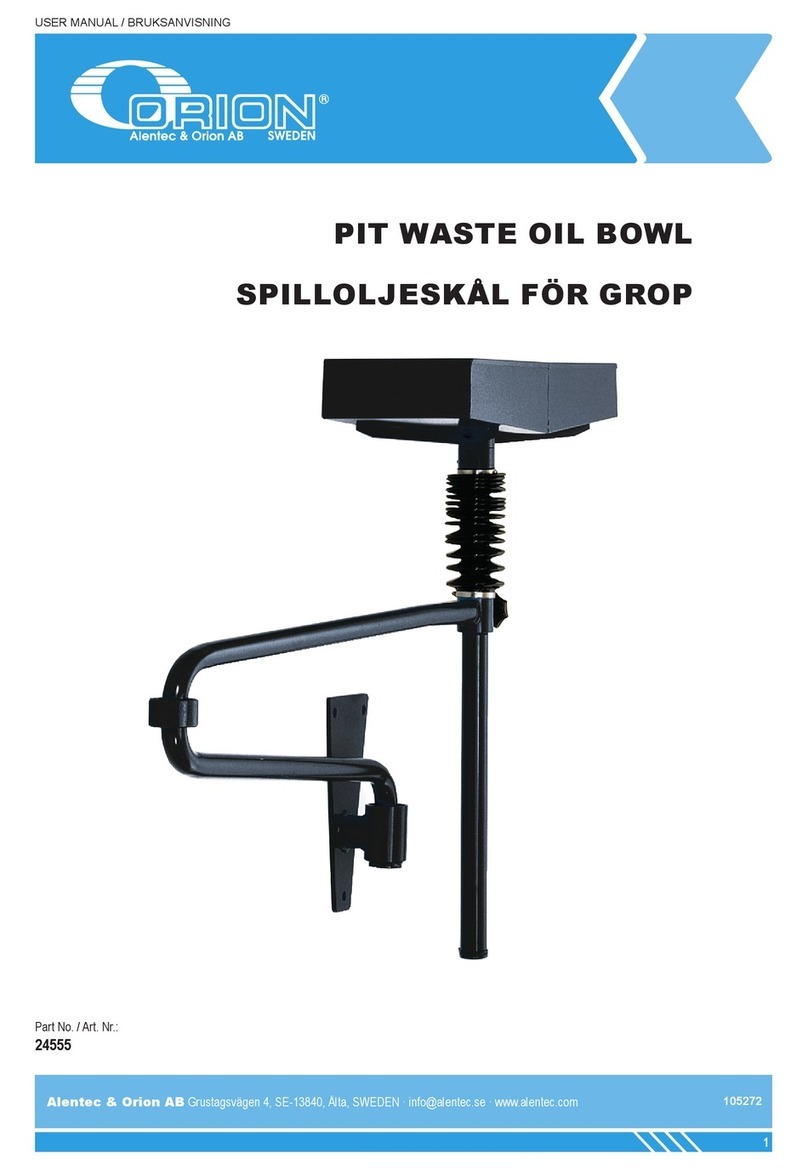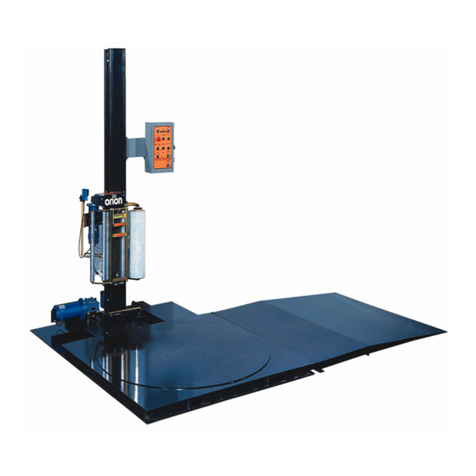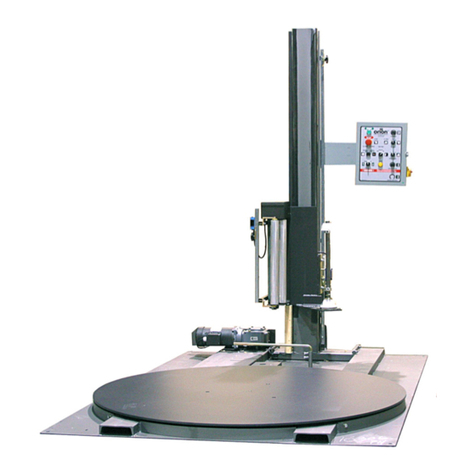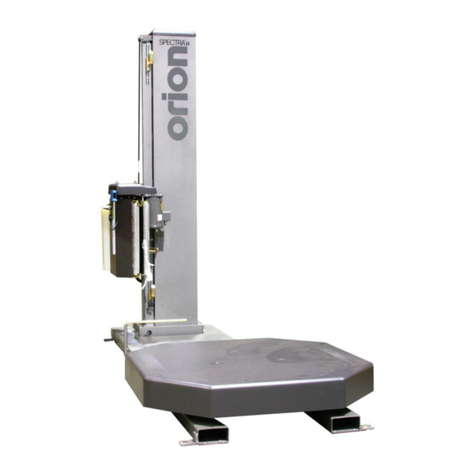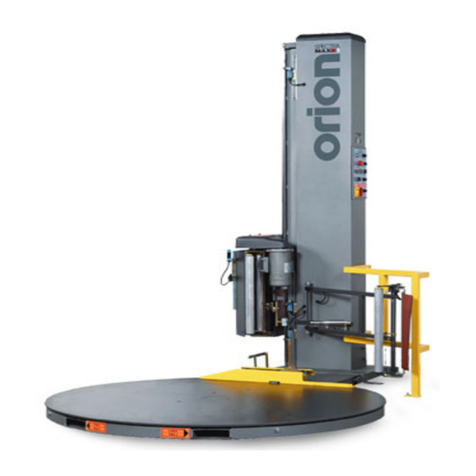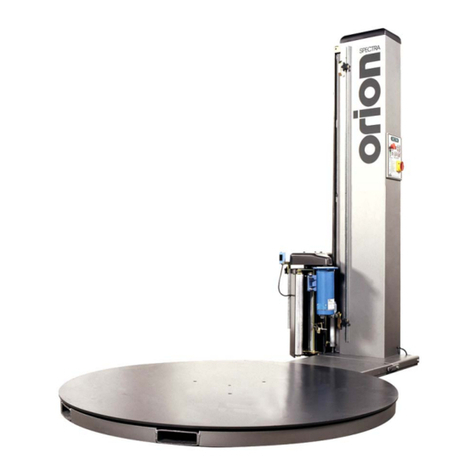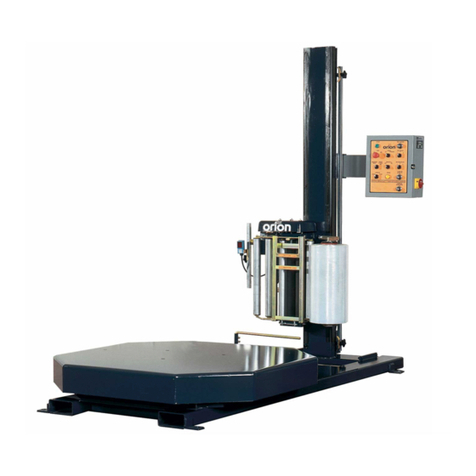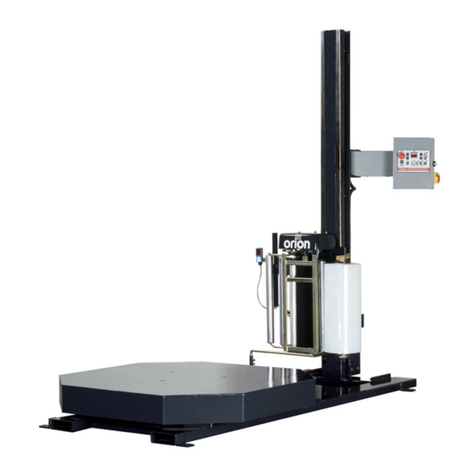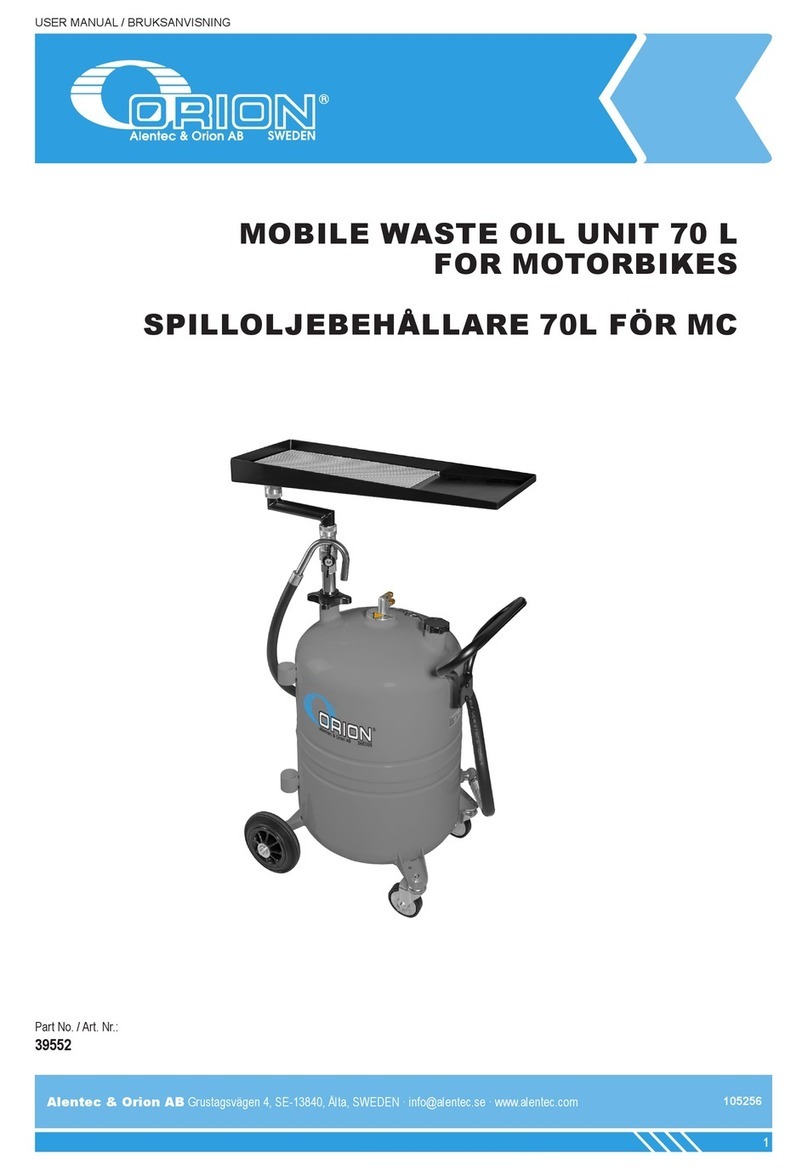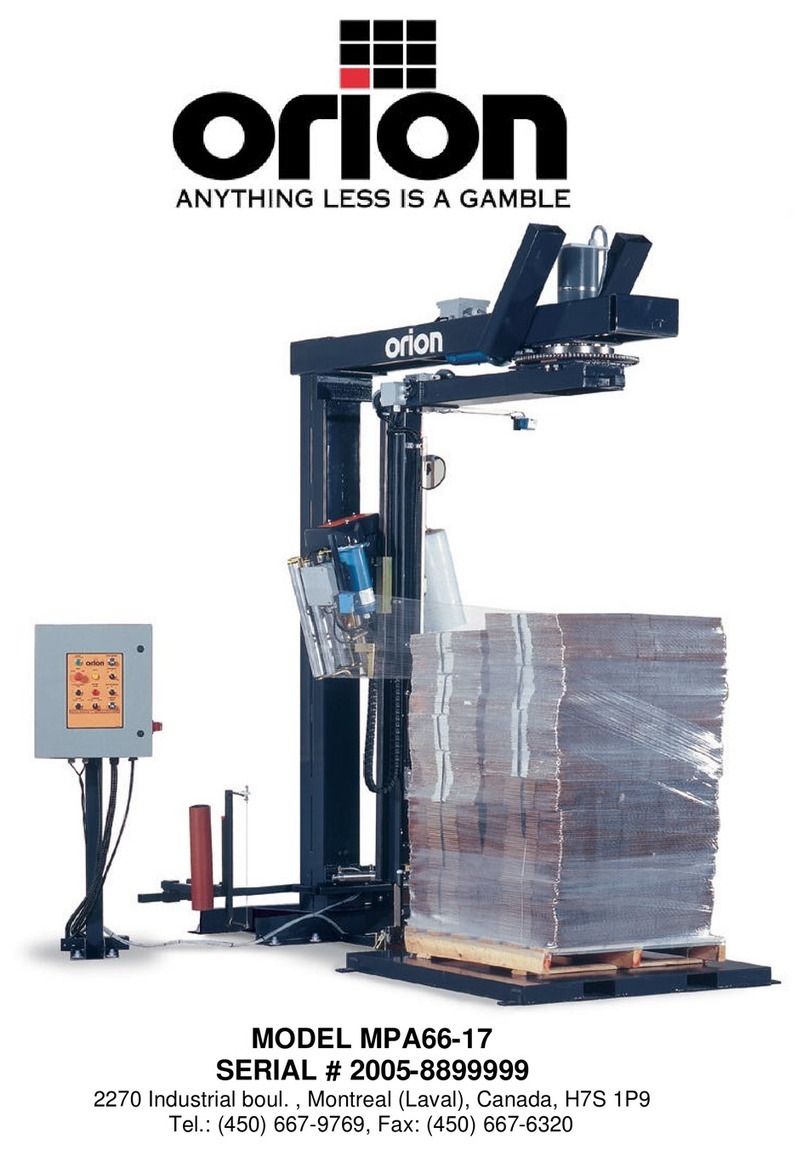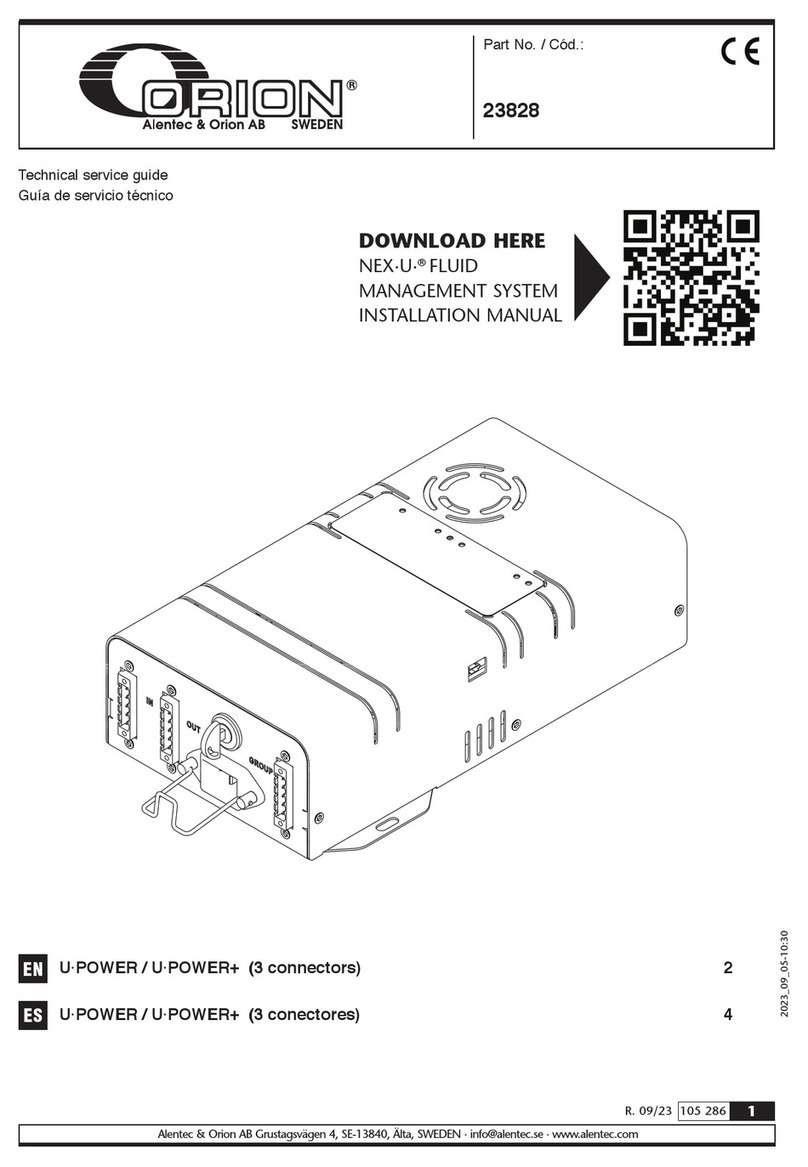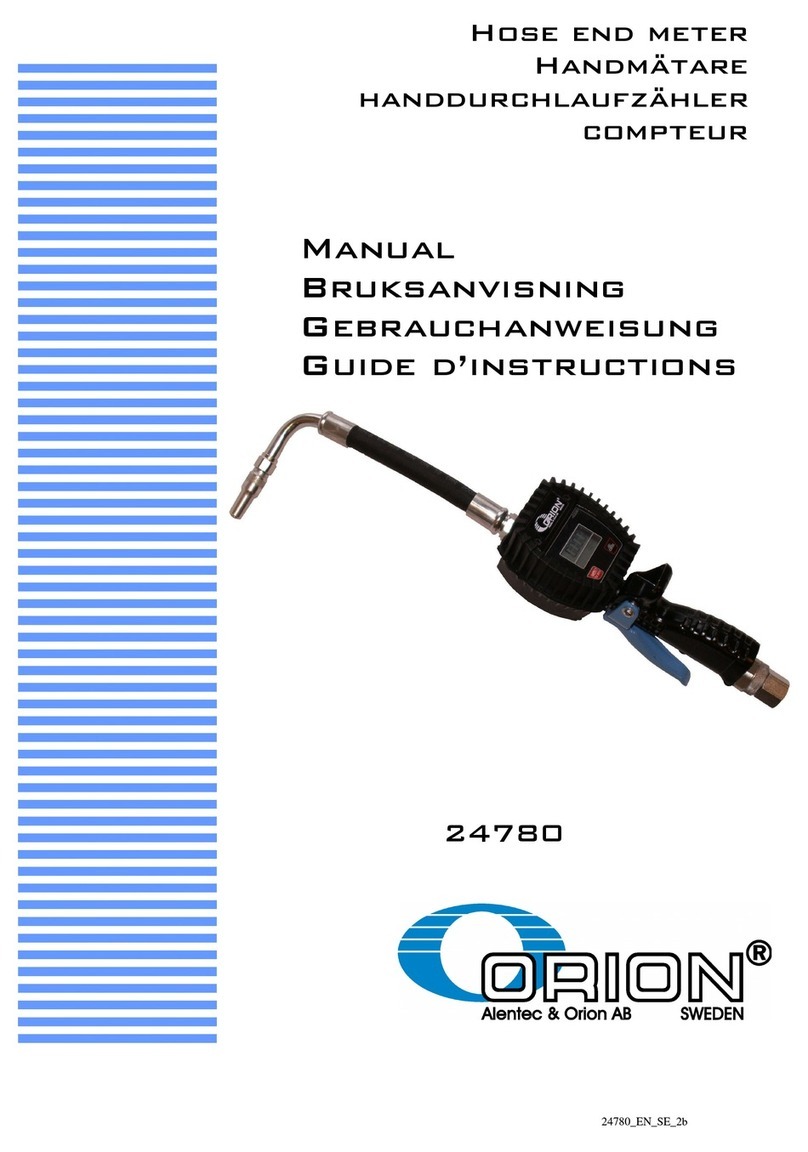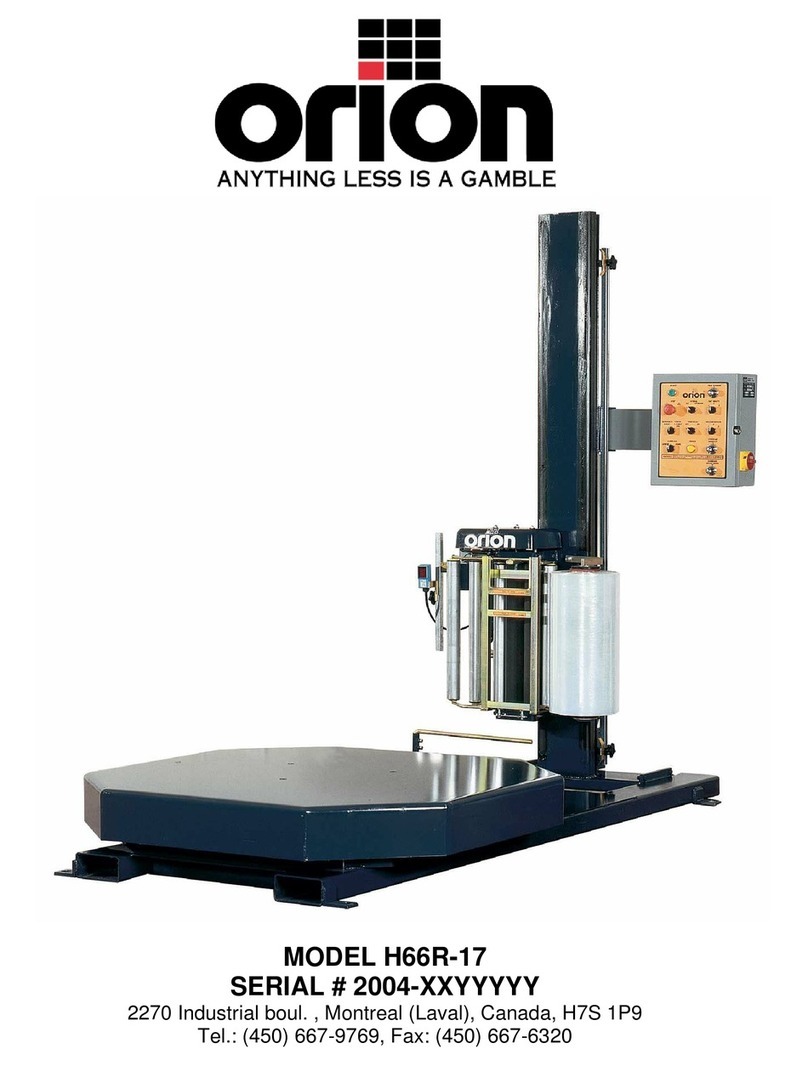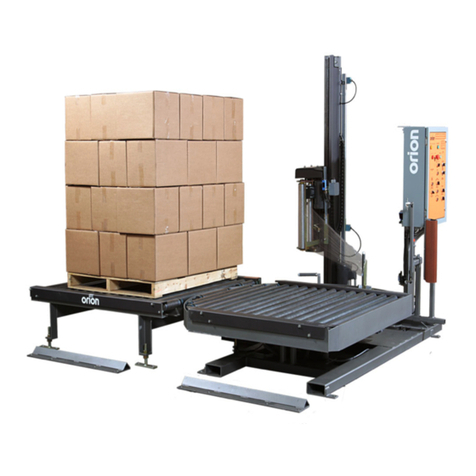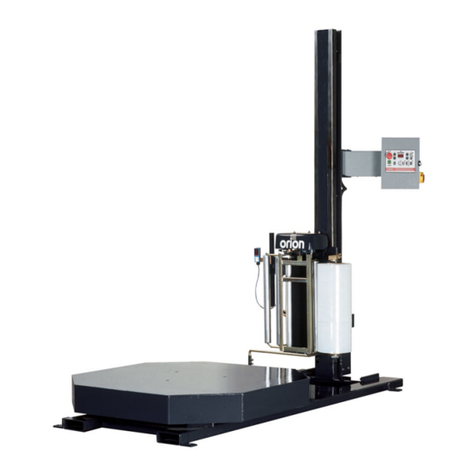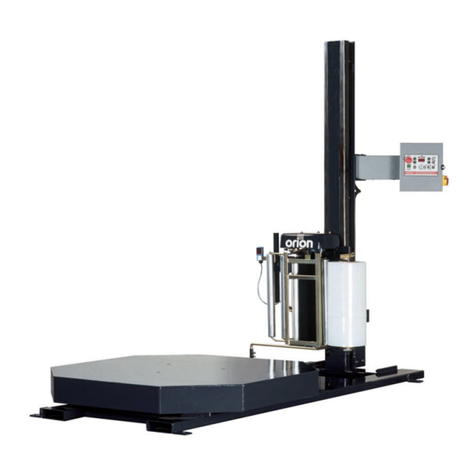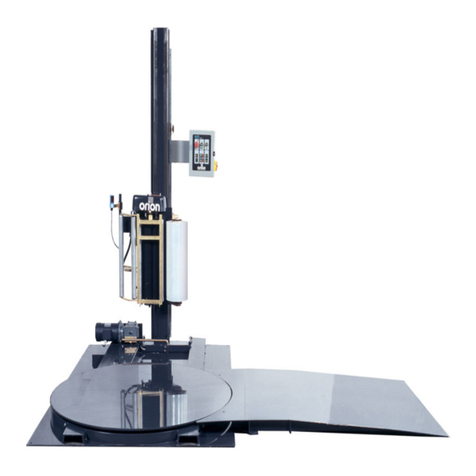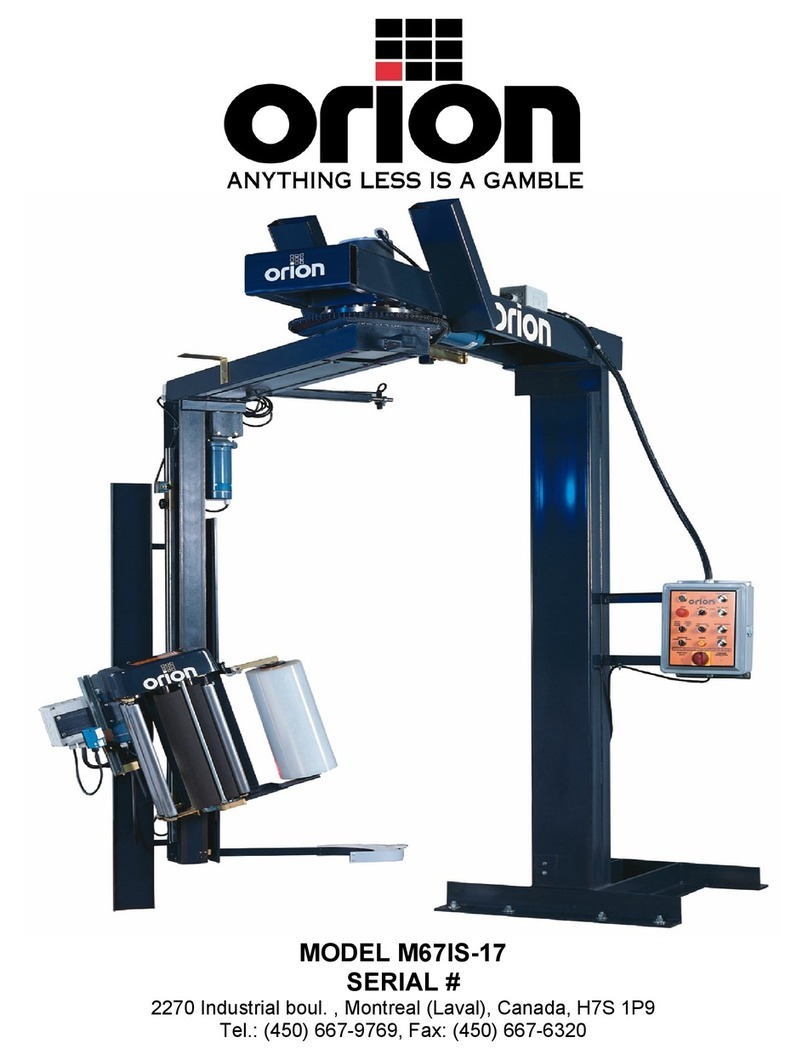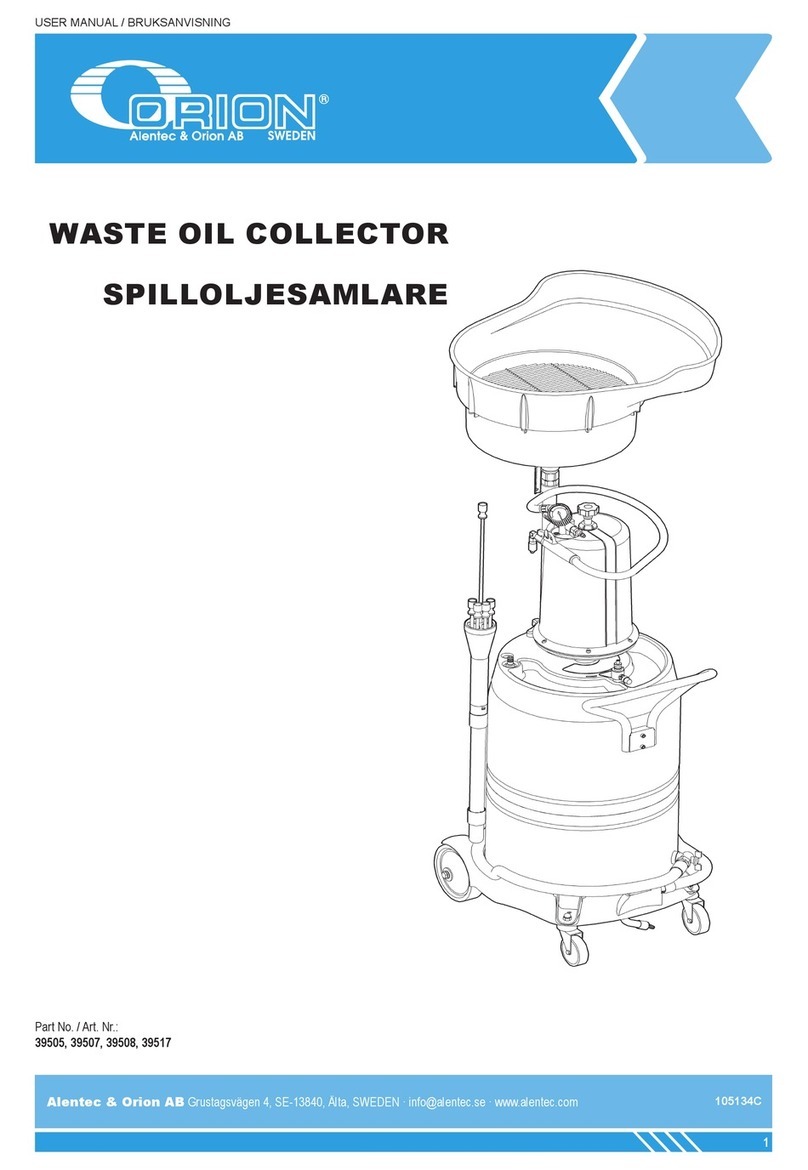
ORION PACKAGING SYSTEMS INC.
SEMI-AUTOMATIC SPECIFICATIONS
ORION EPIC®SERIES MODEL L-77
Spiral Semi-Automatic Medium Duty Low Profile
Maximum Load Size 55”W x 55”L x 84”H
Weight Capacity 4,000 Ibs. Dynamic, 20,000 Ibs. Static
Utilities 115 / 1 / 60 ; 15 Amp Service
Turntable 59” Diameter Structural Steel Plate
Dura-Glide™Turntable Support System
Quiet in Operation, Maintenance Free
3” Height Floor to Top of Turntable
Turntable Drive 0-12 RPM Variable Turntable Speed
Variable Speed Drive Motor
Heavy Duty Chain Drive with Tensioner
Electronically Adjustable Acceleration/Deceleration (Soft Start)
Positive Alignment Feature
Control Features CSA Approved, NEMA 12 Control Panel
State-of-the-Art Logic Control
User Friendly Microprocessor with Micro-Switch Keypad
Revo-Logic™Exact Wrap Counting Technology
Electronic Film Tension Control Adjustment on the Panel
Separate Top I Bottom Wrap Count Selectors with LED Count Display
Variable Speed Film Carriage Up/Down Control
Film Carriage Raise/Lower Switch (Manual)
Photocell for Automatic Load Height Detection
Turntable Jog Pushbutton
Film Delivery 20” Insta-Thread LT Powered Pre-Stretch Film Delivery System
260% Pre-Stretch Ratio
Easy & Safe to Operate Self-Threading Carriage Design
Variable Speed Film Output (Non-Wearing Sensor)
Heavy Duty Chain & Sprocket Ratio Control
Adjustable Film Roping Bar on Chassis for Stronger Interlocking of Load and Pallet
Film Carriage Elevator Drive Heavy Duty ANSI Chain Carriage Lift
Variable Speed Drive Motor
Multi-Point UHMW Precision Carriage Guidance System
Structural Features 100% Structural Steel Construction Throughout
Easy Access to All Components
Open Mechanical Design for Ease of Maintenance
Forklift Portable Base Design
Structural Steel Tube Mast Design
Hinged Mast for Ease of Shipping, Portability
Estimated Shipping Weight 1,500 Ibs.
Visit our Distributor Support Website at www.support@orionpackaging.com
